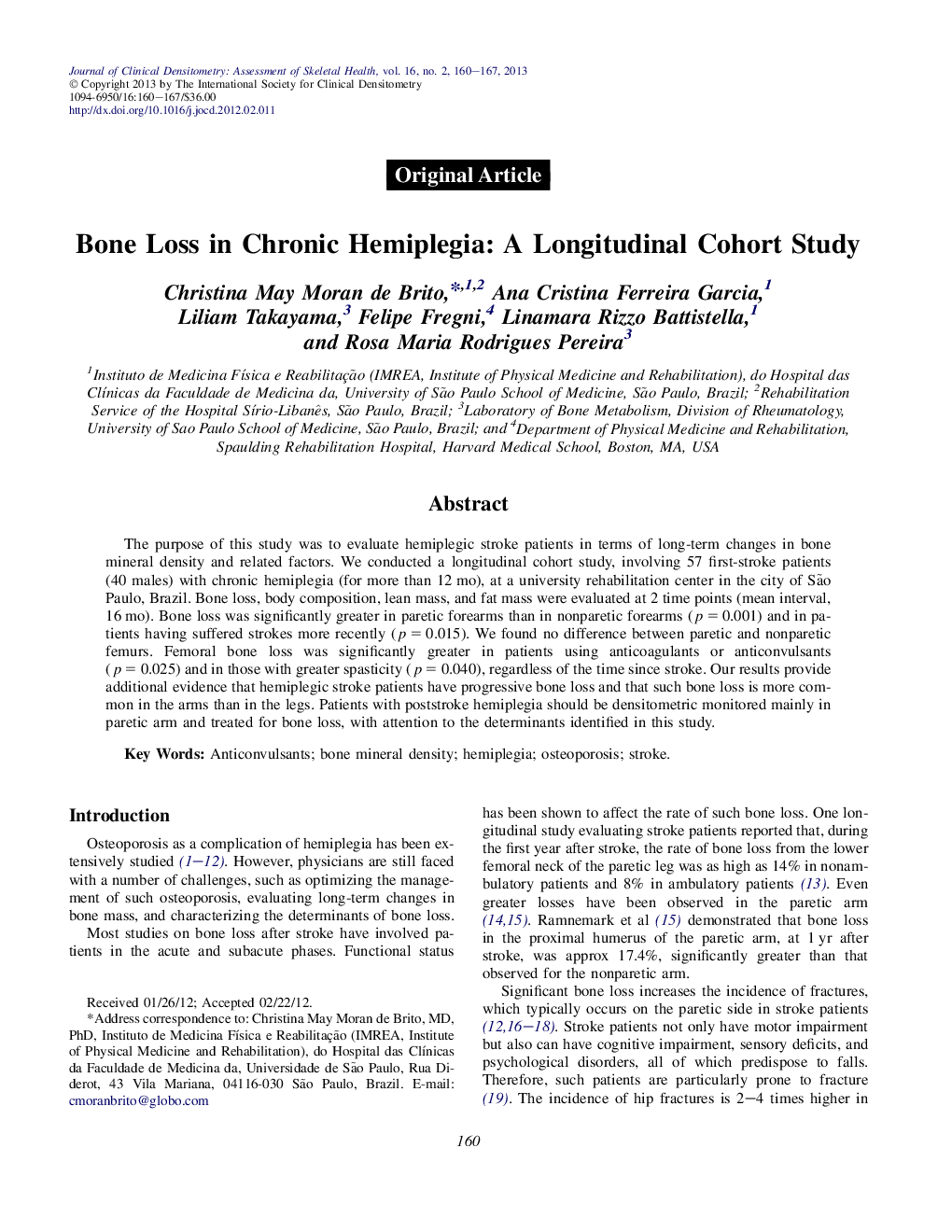| Article ID | Journal | Published Year | Pages | File Type |
|---|---|---|---|---|
| 3270575 | Journal of Clinical Densitometry | 2013 | 8 Pages |
Abstract
The purpose of this study was to evaluate hemiplegic stroke patients in terms of long-term changes in bone mineral density and related factors. We conducted a longitudinal cohort study, involving 57 first-stroke patients (40 males) with chronic hemiplegia (for more than 12 mo), at a university rehabilitation center in the city of São Paulo, Brazil. Bone loss, body composition, lean mass, and fat mass were evaluated at 2 time points (mean interval, 16 mo). Bone loss was significantly greater in paretic forearms than in nonparetic forearms (p = 0.001) and in patients having suffered strokes more recently (p = 0.015). We found no difference between paretic and nonparetic femurs. Femoral bone loss was significantly greater in patients using anticoagulants or anticonvulsants (p = 0.025) and in those with greater spasticity (p = 0.040), regardless of the time since stroke. Our results provide additional evidence that hemiplegic stroke patients have progressive bone loss and that such bone loss is more common in the arms than in the legs. Patients with poststroke hemiplegia should be densitometric monitored mainly in paretic arm and treated for bone loss, with attention to the determinants identified in this study.
Related Topics
Health Sciences
Medicine and Dentistry
Endocrinology, Diabetes and Metabolism
Authors
Christina May Moran de Brito, Ana Cristina Ferreira Garcia, Liliam Takayama, Felipe Fregni, Linamara Rizzo Battistella, Rosa Maria Rodrigues Pereira,
